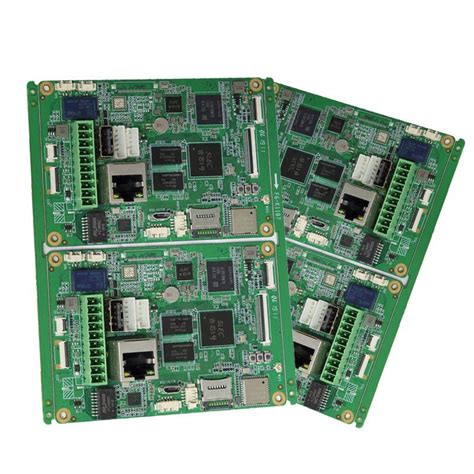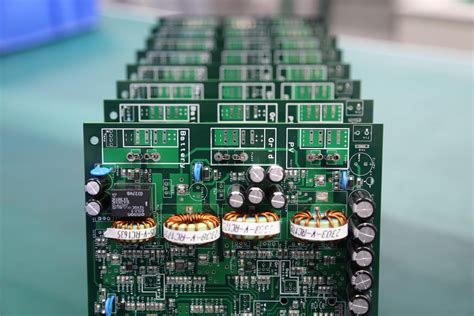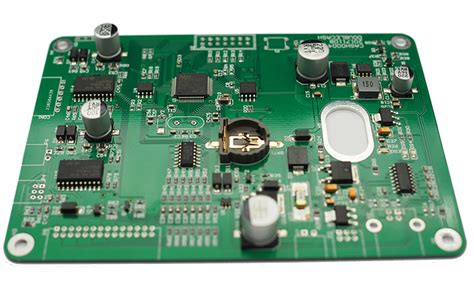Battery for circuit
Understanding Battery Types for Circuit Design
In the realm of circuit design, selecting the appropriate battery is a critical decision that can significantly influence the performance, efficiency, and longevity of the entire system. Understanding the various types of batteries available and their respective characteristics is essential for engineers and designers aiming to optimize their circuits. Batteries serve as the primary power source for countless electronic devices, and their selection is often dictated by the specific requirements of the circuit, including voltage, current, size, and environmental conditions.
To begin with, it is important to recognize the fundamental types of batteries commonly used in circuit design: primary and secondary batteries.
Primary batteries, such as alkaline and lithium batteries, are designed for single-use applications. They are typically employed in devices where recharging is impractical or unnecessary, such as remote controls and smoke detectors. These batteries are known for their long shelf life and high energy density, making them suitable for low-drain applications.
In contrast, secondary batteries, also known as rechargeable batteries, are designed for multiple charge-discharge cycles.
Among the most prevalent types are nickel-cadmium (NiCd), nickel-metal hydride (NiMH), and lithium-ion (Li-ion) batteries. Each of these has distinct advantages and limitations. NiCd batteries, for instance, are known for their robustness and ability to deliver high discharge rates, but they suffer from a memory effect, which can reduce their capacity over time. NiMH batteries, on the other hand, offer higher energy density and are more environmentally friendly, though they may have a shorter lifespan compared to NiCd.
Lithium-ion batteries have gained prominence due to their high energy density, lightweight nature, and low self-discharge rate.
These characteristics make them ideal for portable electronics, such as smartphones and laptops. However, they require careful management to prevent overcharging and overheating, which can lead to safety hazards. Consequently, circuit designers must incorporate appropriate battery management systems to ensure safe and efficient operation.
Furthermore, when selecting a battery for circuit design, it is crucial to consider the voltage and current requirements of the application.
Batteries are available in various voltage ratings, and choosing one that matches the circuit’s needs is essential to avoid underperformance or damage. Additionally, the battery’s capacity, measured in ampere-hours (Ah), should align with the device’s power consumption to ensure adequate runtime.
Another important consideration is the physical size and form factor of the battery.
In compact devices, space constraints may dictate the choice of a smaller battery, even if it means compromising on capacity. Designers must balance these trade-offs to achieve the desired performance while maintaining a compact and efficient design.
Environmental factors also play a role in battery selection.
For instance, in applications exposed to extreme temperatures or humidity, it is vital to choose a battery that can withstand such conditions without degradation. Some batteries are specifically designed for harsh environments, offering enhanced durability and reliability.
In conclusion, understanding the various types of batteries and their characteristics is paramount for effective circuit design. By carefully considering factors such as battery type, voltage, capacity, size, and environmental conditions, designers can make informed decisions that enhance the performance and reliability of their circuits. As technology continues to evolve, staying abreast of advancements in battery technology will be essential for optimizing future circuit designs.

How to Choose the Right Battery for Your Circuit
Selecting the appropriate battery for your circuit is a crucial step in ensuring the optimal performance and longevity of your electronic device. The process involves understanding various factors that influence the compatibility and efficiency of the battery with your specific circuit requirements. To begin with, it is essential to consider the voltage requirements of your circuit. The voltage of the battery must match the voltage needs of the circuit to prevent any potential damage or malfunction. For instance, using a battery with a higher voltage than required can lead to overheating and damage to the components, while a lower voltage may result in insufficient power supply, causing the circuit to underperform.
In addition to voltage, the capacity of the battery, measured in milliampere-hours (mAh), is another critical factor.
The capacity determines how long the battery can power the circuit before needing a recharge or replacement. A higher capacity battery will last longer, making it suitable for applications where frequent battery changes are impractical. However, it is important to balance capacity with size and weight, especially in portable devices where space is limited. Therefore, understanding the power consumption of your circuit will help you choose a battery with an appropriate capacity that meets your needs without adding unnecessary bulk.
Furthermore, the type of battery chemistry plays a significant role in the selection process.
Common battery chemistries include alkaline, lithium-ion, nickel-metal hydride (NiMH), and lead-acid, each with its own advantages and limitations. Alkaline batteries are widely available and cost-effective for low-drain devices, while lithium-ion batteries offer high energy density and are rechargeable, making them ideal for high-drain applications such as smartphones and laptops. NiMH batteries are also rechargeable and environmentally friendly, providing a good balance between cost and performance. Lead-acid batteries, on the other hand, are typically used in larger applications like automotive and backup power systems due to their robustness and reliability.
Moreover, environmental conditions should not be overlooked when choosing a battery. Temperature extremes can significantly affect battery performance and lifespan.
For example, lithium-ion batteries are sensitive to high temperatures, which can lead to reduced capacity and potential safety hazards. Therefore, it is crucial to select a battery that can operate efficiently within the expected temperature range of your application. Additionally, consider the shelf life of the battery, especially for devices that are not used frequently. Batteries with a long shelf life, such as lithium primary cells, are preferable for such applications as they retain their charge over extended periods.
Finally, cost considerations are inevitable in the decision-making process.
While it might be tempting to opt for the cheapest option, it is important to weigh the initial cost against the long-term benefits. Investing in a high-quality battery that offers better performance and longevity can result in cost savings over time by reducing the frequency of replacements and minimizing downtime.
In conclusion, choosing the right battery for your circuit involves a careful evaluation of voltage, capacity, chemistry, environmental conditions, and cost. By taking these factors into account, you can ensure that your circuit operates efficiently and reliably, ultimately enhancing the overall performance of your electronic device.

Battery Management Systems: Ensuring Efficiency and Safety
In the realm of modern electronics, the battery serves as the lifeblood of countless devices, from small gadgets to large-scale industrial systems. As the demand for portable and efficient power sources continues to rise, the importance of effective battery management systems (BMS) becomes increasingly apparent. These systems are crucial in ensuring both the efficiency and safety of batteries, particularly in complex circuits where precision and reliability are paramount.
To begin with, a battery management system is an electronic system that manages a rechargeable battery, such as by monitoring its state, calculating secondary data, r
eporting that data, protecting the battery, and controlling its environment. The primary function of a BMS is to ensure that the battery operates within its safe operating area, thereby preventing conditions that could lead to failure or hazardous situations. This is achieved through a combination of monitoring, balancing, and protection mechanisms.
Monitoring is a fundamental aspect of any BMS. It involves the continuous assessment of various parameters such as voltage, current, and temperature.
By keeping a close watch on these factors, the BMS can provide real-time data that is essential for maintaining the health of the battery. For instance, voltage monitoring ensures that each cell within a battery pack is operating within its specified limits, preventing overcharging or deep discharging, both of which can significantly reduce the lifespan of a battery.
In addition to monitoring, balancing is another critical function of a BMS.
In multi-cell battery packs, it is common for cells to become imbalanced over time due to manufacturing inconsistencies or varying operating conditions. This imbalance can lead to reduced capacity and efficiency, as well as increased risk of failure. A BMS addresses this issue by redistributing charge among the cells, ensuring that each one is equally charged and discharged. This not only maximizes the performance of the battery but also extends its overall lifespan.
Protection mechanisms are equally vital in a BMS, as they safeguard the battery from potentially dangerous conditions.
These mechanisms include overcurrent protection, which prevents excessive current flow that could lead to overheating or damage, and thermal management, which ensures that the battery operates within a safe temperature range. By incorporating these protective features, a BMS can prevent catastrophic failures such as thermal runaway, which can result in fires or explosions.
Furthermore, the integration of advanced technologies such as machine learning and artificial intelligence into BMS design is paving the way for even more sophisticated systems. These technologies enable predictive analytics, allowing for the early detection of potential issues before they escalate into serious problems. By analyzing patterns and trends in battery performance, a BMS can make informed decisions that enhance both efficiency and safety.
In conclusion, battery management systems play an indispensable role in the modern world, where the demand for reliable and efficient power sources is ever-growing. By ensuring that batteries operate within their safe limits, balancing cell charge, and providing robust protection mechanisms, BMSs contribute significantly to the longevity and safety of battery-powered devices. As technology continues to evolve, the development of more advanced BMSs will undoubtedly lead to even greater improvements in battery performance, ultimately benefiting a wide range of applications across various industries.

Extending Battery Life in Electronic Circuits
In the realm of electronic circuits, the battery serves as a fundamental component, providing the necessary power to drive various devices and systems. As technology continues to advance, the demand for longer-lasting batteries has become increasingly critical. Extending battery life not only enhances the efficiency of electronic devices but also contributes to sustainability by reducing waste and the frequency of battery replacements. Understanding the factors that influence battery longevity is essential for engineers and designers aiming to optimize circuit performance.
One of the primary considerations in extending battery life is the selection of the appropriate battery type for the specific application.
Different battery chemistries, such as lithium-ion, nickel-metal hydride, and alkaline, offer varying energy densities, discharge rates, and life cycles. For instance, lithium-ion batteries are renowned for their high energy density and long cycle life, making them suitable for portable electronics. However, they may not be the best choice for applications requiring low-cost solutions or where environmental conditions are harsh. Therefore, selecting a battery that aligns with the device’s power requirements and operating environment is crucial.
Moreover, the design of the electronic circuit itself plays a significant role in battery life extension.
Minimizing power consumption through efficient circuit design can significantly prolong battery life. This can be achieved by employing low-power components, optimizing the circuit layout, and implementing power management techniques. For example, using microcontrollers with sleep modes can reduce power consumption during periods of inactivity. Additionally, incorporating voltage regulators and efficient power conversion methods can ensure that the battery’s energy is utilized effectively, thereby reducing unnecessary power loss.
Furthermore, the operating conditions of the battery can greatly impact its lifespan.
Temperature is a critical factor, as extreme temperatures can accelerate battery degradation. Ensuring that the battery operates within its specified temperature range can prevent premature aging and capacity loss. In addition, avoiding deep discharges and overcharging can help maintain battery health. Implementing battery management systems (BMS) that monitor and control charging and discharging cycles can protect the battery from harmful conditions, thereby extending its operational life.
Another aspect to consider is the load profile of the electronic device.
Devices with fluctuating power demands can benefit from techniques such as load leveling and peak shaving. These methods involve distributing the power load more evenly over time, reducing the stress on the battery and preventing rapid depletion. By smoothing out the power demand, the battery can operate more efficiently and last longer.
In addition to these technical strategies, regular maintenance and monitoring of the battery can also contribute to its longevity.
Periodic checks for signs of wear, such as swelling or leakage, can help identify potential issues before they lead to failure. Moreover, using smart battery technologies that provide real-time data on battery health and performance can enable proactive management and timely interventions.
In conclusion, extending battery life in electronic circuits requires a multifaceted approach that encompasses careful selection of battery type, efficient circuit design, optimal operating conditions, and effective load management. By addressing these factors, engineers and designers can enhance the performance and reliability of electronic devices while also promoting sustainability. As technology continues to evolve, ongoing research and innovation in battery technology will undoubtedly play a pivotal role in meeting the growing demands for longer-lasting power sources.







